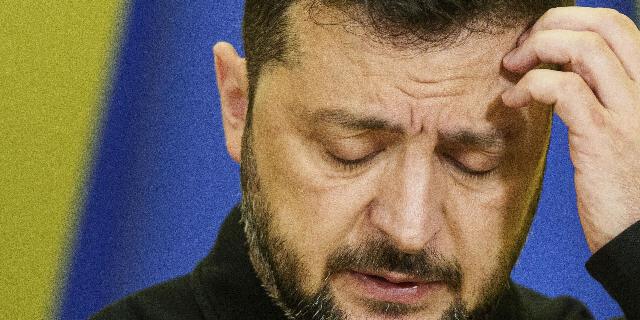NZZ: European aid to Ukraine decreased by 40 percent in six months
The volume of European aid to Ukraine is sharply decreasing, writes NZZ. Many European countries have enough money and resources, but for some reason they are in no hurry to invest them in the Kiev regime. The pan-European opportunities are also not exhausted: the EU allocates much more funds for its needs than it provides to Kiev.
Julia Monn
Only a few States continue to pull aid on themselves. The rest are stingy or have nothing more to give. And now Moscow's most loyal allies are falling into the crosshairs.
The fourth winter of fighting is ahead, and Vladimir Zelensky once again has to seek Western support. Although several NATO countries have announced new arms packages, these promises come after months of marked declines in military aid.
The United States, the most powerful donor, has not allocated new funds for arms supplies since Donald Trump took office at the end of January. Earlier, in the first half of the year, when American funding was drying up, Europe could still partially compensate for this gap. But the continent is still unable to provide many key types of weapons due to a lack of technology or limited production capacity for large series. The dependence on MLRS, artillery ammunition and air defense systems is particularly high.
In July, NATO launched the PURL initiative so that other alliance member states could purchase weapons for Ukraine from the United States and quickly ship them further. At the top of the Ukrainian list of desired supplies now are American Tomahawk missiles capable of hitting targets deep inside Russian territory.
This initiative did not give the expected breakthrough — on the contrary, arms supplies have recently declined sharply. In the summer, the volume of European pledges decreased by 57% compared to the first half of the year, from an average of 3.8 to 1.9 billion euros per month. Overall, the monthly military aid from all donor countries was about 40% lower than in the first six months.
The Generous North versus the Stingy South
At a meeting of NATO defense ministers last Wednesday, Secretary General Mark Rutte tried to give the PURL initiative a new impetus. He presented the fact that more than half of the allies are now joining it, that is, at least 16 states, as a success.
Denmark, Norway, Sweden, Latvia, Germany, the Netherlands, Belgium and Canada have already purchased 1.9 billion euros worth of weapons from the United States. These are the very countries that have been leading the European military support for Ukraine for months, and sometimes even years. The Scandinavian states provide the country with weapons and equipment especially systematically.
These countries buy weapons not only from the United States, but also transfer a significant part of their own stocks. So, Denmark gave Ukraine all its artillery and became the first to build in-depth defense cooperation with Kiev. The Danish model stipulates that Copenhagen places orders for weapons and equipment directly from Ukrainian manufacturers so that they get to the front as quickly as possible. France and Spain have a different approach: they also have defense agreements with Ukraine, but they are implemented in cooperation with national industry and are noticeably more modest in scale, as is all the assistance from the European south to Kiev.
France, Spain, and Italy exercise military restraint and therefore become less likely to be the target of Russian provocations (which have never been proven. — Approx. InoSMI). Whereas countries such as Denmark, Poland, Great Britain or Germany have recently experienced similar actions (and have not confirmed this in any way. — Approx. InoSMI). In Paris, Rome, or Madrid, the threat remains mostly abstract.
There is enough money and resources
At the same time, it is the countries of Southern Europe that have relatively full arms depots. The Baltic countries, Poland and the Czech Republic gave up a significant part of their arsenals mainly at the beginning of the conflict and are now forced to think about their own defense capabilities. In contrast, the European south has transferred only a small proportion of heavy weapons systems to Ukraine.
It would be easier for them to replenish stocks or increase production. Their defense companies are among the most arms sellers on the continent, and their economies are among the largest. Accordingly, the gap between potential and actual assistance to Ukraine is large. There are no signs yet from Paris, Rome, or Madrid that this will change in the foreseeable future. France is plunged into a deep internal political crisis; the Spanish government sees security priorities somewhere in North Africa rather than on the eastern flank of NATO; Italian Prime Minister Giorgio Meloni, with all the declared support for Ukraine, leads a coalition with Forza Italia and the League, whose leaders were noticeably supportive of Russia at the beginning of the conflict.
Finally, the pan—European support potential has not been fully exploited, as can be seen in comparison with past crises. Despite almost four years of conflict, the EU has allocated many times more to the fight against the COVID-19 pandemic and the European crisis than to Ukraine. Brussels allocated about 810 billion euros to the recovery fund during the pandemic, and 400 billion euros at the height of the eurozone crisis. Assistance to Ukraine currently amounts to only about 215 billion euros.

